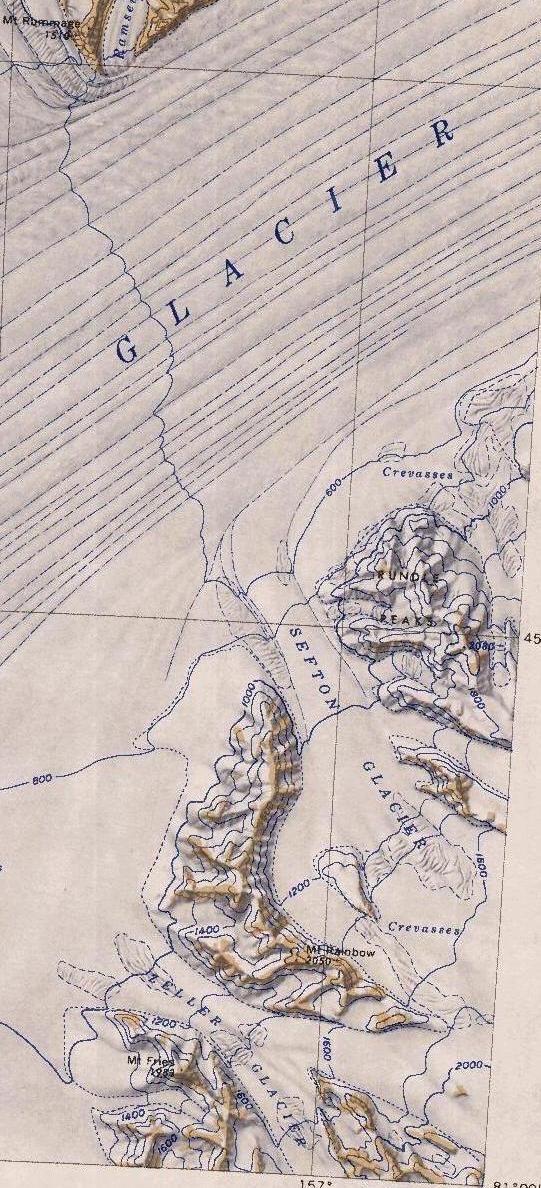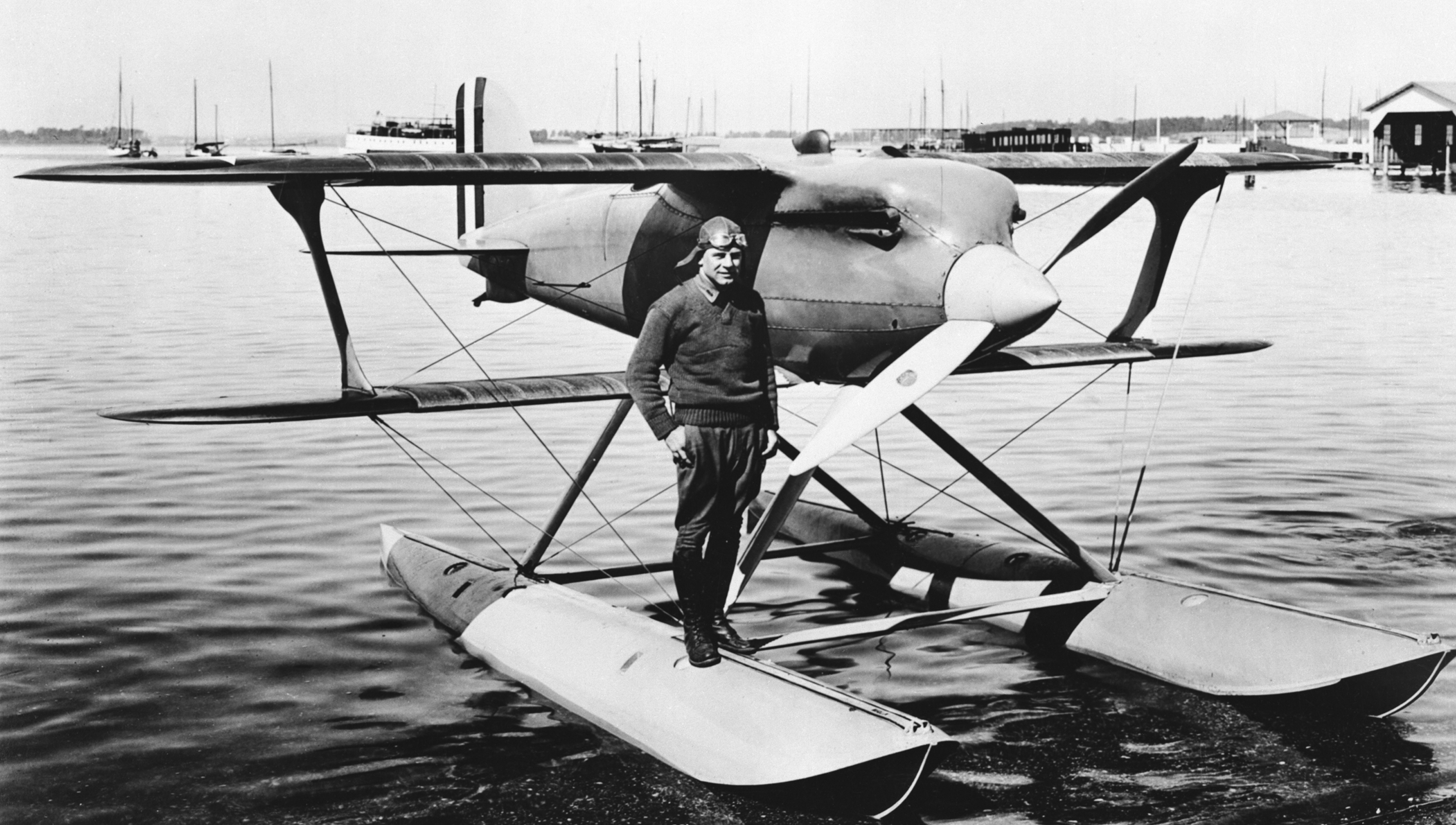|
Doolittle Massif
Doolittle Massif () is a compact group of mountain heights in the northwest Churchill Mountains between Zeller Glacier and Sefton Glacier where the glaciers enter the larger Byrd Glacier. The feature is 10 nautical miles (18 km) long and rises to in Mount Rainbow. It was named by the Advisory Committee on Antarctic Names after General James H. (Jimmy) Doolittle United States Air Force, an American aviator and hero who visited McMurdo Station in 1962. In 1942 then Lieutenant Colonel Doolittle initiated heavy aircraft operations from the U.S. Navy aircraft carrier ''Hornet'' leading to carrier-based R4D operations from the carrier ''Philippine Sea'' during Operation Highjump Operation HIGHJUMP, officially titled The United States Navy Antarctic Developments Program, 1946–1947, (also called Task Force 68), was a United States Navy (USN) operation to establish the Antarctic research base Little America IV. The opera ... in January 1946. References Mountains of O ... [...More Info...] [...Related Items...] OR: [Wikipedia] [Google] [Baidu] |
Churchill Mountains
The Churchill Mountains are a mountain range group of the Transantarctic Mountains System, located in the Ross Dependency region of Antarctica. They border on the western side of the Ross Ice Shelf, between Byrd Glacier and Nimrod Glacier. Several of the range's highest summits, including Mounts Egerton, Field, Nares, Wharton, and Albert Markham were first seen and named by the Discovery Expedition of 1901–1904 (aka: British National Antarctic Expedition), under Robert Falcon Scott The mountains were mapped in detail by the USGS from Tellurometer surveys during 1960–61, and by United States Navy air photos in 1960. They were named by the US-ACAN for Sir Winston Churchill. Mountains and peaks ;Mount Albert Markham Mount Albert Markham is a striking flat-topped mountain, standing midway between Mount Nares and Pyramid Mountain. Discovered by the Discovery Expedition and named for Admiral Sir Albert Hastings Markham, a member of the Ship Committee for the expedit ... [...More Info...] [...Related Items...] OR: [Wikipedia] [Google] [Baidu] |
Zeller Glacier
The Byrd Glacier is a major glacier in Antarctica, about long and wide, draining an extensive area of the polar plateau and flowing eastward between the Britannia Range and Churchill Mountains to discharge into the Ross Ice Shelf at Barne Inlet. Its valley below the glacier used to be recognised as one of the lowest points not to be covered by water on Earth (assuming ice doesn't count as water), reaching below sea level. It was named by the NZ-APC after Rear Admiral Byrd, US Navy Antarctic explorer. On the south side of Byrd Glacier is Blake Massif. See also * Glaciology * Ice stream * List of Antarctic ice streams * List of glaciers in the Antarctic * List of places in Antarctica below sea level ** Denman Glacier Denman Glacier is a glacier wide, descending north some , which debouches into the Shackleton Ice Shelf east of David Island, Queen Mary Land. It was discovered in November 1912 by the Western Base party of the Australasian Antarctic Expediti ... Referen ... [...More Info...] [...Related Items...] OR: [Wikipedia] [Google] [Baidu] |
Mount Rainbow
The Kent Plateau () is an ice-covered plateau in the northern extreme of the Churchill Mountains of Antarctica. Name Kent Plateau was named by the Advisory Committee on Antarctic Names for Commander Donald F. Kent, U.S. Navy, logistics officer to Admiral Dufek at the outset of U.S. Navy Operation Deep Freeze I, 1955–56. Location The Kent Plateau is an ice-covered plateau, long and wide, extending northward from Mount Egerton and Kiwi Pass to the vicinity of Mount Hamilton. The plateau is on the west of a ridge of mountains that runs north from Mount Durnford, dips at Kiwi Pass, then continues north from Mount Moa to Mount Hamilton along the east edge of the plateau. To the west of the plateau along the southeast edge of the Byrd Glacier there is a chain of mountains broken by glaciers that flow down from the plateau region to Byrd Glacier. Glaciers Several short glaciers run down from the plateau into Byrd Glacier. From southwest to northeast they are: Zeller Glacier . A g ... [...More Info...] [...Related Items...] OR: [Wikipedia] [Google] [Baidu] |
Advisory Committee On Antarctic Names
The Advisory Committee on Antarctic Names (ACAN or US-ACAN) is an advisory committee of the United States Board on Geographic Names responsible for recommending commemorative names for features in Antarctica. History The committee was established in 1943 as the Special Committee on Antarctic Names (SCAN). It became the Advisory Committee on Antarctic Names in 1947. Fred G. Alberts was Secretary of the Committee from 1949 to 1980. By 1959, a structured nomenclature was reached, allowing for further exploration, structured mapping of the region and a unique naming system. A 1990 ACAN gazeeter of Antarctica listed 16,000 names. Description The United States does not recognise territorial boundaries within Antarctica, so ACAN assigns names to features anywhere within the continent, in consultation with other national nomenclature bodies where appropriate, as defined by the Antarctic Treaty System. The research and staff support for the ACAN is provided by the United States Geolog ... [...More Info...] [...Related Items...] OR: [Wikipedia] [Google] [Baidu] |
Jimmy Doolittle
James Harold Doolittle (December 14, 1896 – September 27, 1993) was an American military general and aviation pioneer who received the Medal of Honor for his daring raid on Japan during World War II. He also made early coast-to-coast flights, record-breaking speed flights, won many flying races, and helped develop and flight-test instrument flying. Raised in Nome, Alaska, Doolittle studied as an undergraduate at University of California, Berkeley, graduating with a Bachelor of Arts in 1922. He also earned a doctorate in aeronautics from the Massachusetts Institute of Technology in 1925, the first issued in the United States. In 1929, he pioneered the use of "blind flying", where a pilot relies on flight instruments alone, which later won him the Harmon Trophy and made all-weather airline operations practical. He was a flying instructor during World War I and a reserve officer in the United States Army Air Corps, but he was recalled to active duty during World War II. He was ... [...More Info...] [...Related Items...] OR: [Wikipedia] [Google] [Baidu] |
United States Air Force
The United States Air Force (USAF) is the air service branch of the United States Armed Forces, and is one of the eight uniformed services of the United States. Originally created on 1 August 1907, as a part of the United States Army Signal Corps, the USAF was established as a separate branch of the United States Armed Forces in 1947 with the enactment of the National Security Act of 1947. It is the second youngest branch of the United States Armed Forces and the fourth in order of precedence. The United States Air Force articulates its core missions as air supremacy, global integrated intelligence, surveillance and reconnaissance, rapid global mobility, global strike, and command and control. The United States Air Force is a military service branch organized within the Department of the Air Force, one of the three military departments of the Department of Defense. The Air Force through the Department of the Air Force is headed by the civilian Secretary of the ... [...More Info...] [...Related Items...] OR: [Wikipedia] [Google] [Baidu] |
McMurdo Station
McMurdo Station is a United States Antarctic research station on the south tip of Ross Island, which is in the New Zealand-claimed Ross Dependency on the shore of McMurdo Sound in Antarctica. It is operated by the United States through the United States Antarctic Program (USAP), a branch of the National Science Foundation. The station is the largest community in Antarctica, capable of supporting up to 1,258 residents, and serves as one of three year-round United States Antarctic science facilities. All personnel and cargo going to or coming from Amundsen–Scott South Pole Station first pass through McMurdo. By road, McMurdo is 3 kilometres (1.9 mi) from New Zealand's smaller Scott Base. History The station takes its name from its geographic location on McMurdo Sound, named after Lieutenant Archibald McMurdo of . The ''Terror'', commanded by Irish explorer Francis Crozier, along with expedition flagship ''Erebus'' under command of James Clark Ross, first charted the a ... [...More Info...] [...Related Items...] OR: [Wikipedia] [Google] [Baidu] |
USS Hornet (CV-8)
USS ''Hornet'' (CV-8), the seventh U.S. Navy vessel of that name, was a of the United States Navy. During World War II in the Pacific Theater, she launched the Doolittle Raid on Tokyo and participated in the Battle of Midway and the Buin-Faisi-Tonolai raid. In the Solomon Islands campaign, she was involved in the capture and defense of Guadalcanal and the Battle of the Santa Cruz Islands, where she was irreparably damaged by enemy torpedo and dive bombers. Faced with an approaching Japanese surface force, ''Hornet'' was abandoned and later torpedoed and sunk by approaching Japanese destroyers. ''Hornet'' was in service for one year and six days, and was the last US fleet carrier ever sunk by enemy fire. For these actions, she was awarded four service stars and a citation for the Doolittle Raid in 1942, and her Torpedo Squadron 8 received a Presidential Unit Citation for extraordinary heroism for its performance at the Battle of Midway. Her wreck was located in late Janua ... [...More Info...] [...Related Items...] OR: [Wikipedia] [Google] [Baidu] |
USS Philippine Sea (CV-47)
USS ''Philippine Sea'' (CV/CVA/CVS-47, AVT-11) was one of 24 s of the United States Navy, and the first ship to be named for the Battle of the Philippine Sea. She was launched on 5 September 1945, after the end of World War II, and sponsored by the wife of the Governor of Kentucky. During her career, ''Philippine Sea'' served first in the Atlantic Ocean and saw several deployments to the Mediterranean Sea as well as a trip to Antarctica as a part of Operation Highjump. Sent to the Korean Peninsula at the outbreak of the Korean War, she sent aircraft in support of United Nations ground troops, first during the Battle of Pusan Perimeter and then during the Inchon Landings and the Second Battle of Seoul. She subsequently supported UN troops during the surprise Chinese attack and the Chosin Reservoir Campaign. ''Philippine Sea'' saw three tours to Korea during the war, receiving nine battle stars for her service. For the remainder of her service, she operated primarily out of San ... [...More Info...] [...Related Items...] OR: [Wikipedia] [Google] [Baidu] |
Operation Highjump
Operation HIGHJUMP, officially titled The United States Navy Antarctic Developments Program, 1946–1947, (also called Task Force 68), was a United States Navy (USN) operation to establish the Antarctic research base Little America IV. The operation was organized by Rear Admiral Richard E. Byrd, Jr., USN (Ret), Officer in Charge, Task Force 68, and led by Rear Admiral Ethan Erik Larson, USN, Commanding Officer, Task Force 68. Operation HIGHJUMP commenced 26 August 1946 and ended in late February 1947. Task Force 68 included 4,700 men, 13 ships, and 33 aircraft. HIGHJUMP's objectives, according to the U.S. Navy report of the operation, were: # Training personnel and testing equipment in frigid conditions; # Consolidating and extending the United States' sovereignty over the largest practicable area of the Antarctic continent (publicly denied as a goal before the expedition ended); # Determining the feasibility of establishing, maintaining, and utilizing bases in the Antarctic an ... [...More Info...] [...Related Items...] OR: [Wikipedia] [Google] [Baidu] |






_in_Antartica_1947.jpg)